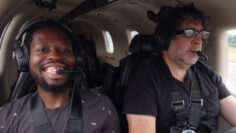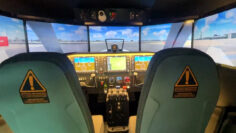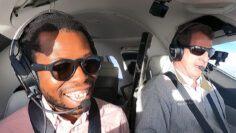What You Need to FLY a Concorde Supersonic Jet

The Concorde was a supersonic jet that revolutionized air travel when it was introduced in the late 1960s. It was capable of flying at twice the speed of sound and could transport passengers from New York to London in just three and a half hours. But piloting this advanced aircraft required extensive training and experience. In this article, we will explore what it takes to pilot the supersonic Concorde jet.
First and foremost, a pilot must meet certain qualifications to fly the Concorde. They must have a commercial pilot’s license, an airline transport pilot rating, and a minimum of 5,000 flight hours. Additionally, pilots must have experience flying jet-powered aircraft and have undergone specialized training specific to the Concorde.

Before takeoff, the pilots go through a pre-flight checklist to ensure the aircraft is in good working condition. This includes checking the fuel levels, engine performance, and navigation systems. Once everything is deemed ready, the pilots begin the takeoff procedure.

The Concorde has a unique takeoff procedure due to its high speed capabilities. The aircraft uses afterburners to reach takeoff speed, which requires a longer runway than most commercial aircraft. The pilots must be aware of their speed and altitude at all times during takeoff to ensure a smooth transition to cruising altitude.
Once the aircraft reaches cruising altitude, the pilots must continue to monitor the aircraft’s systems and maintain its speed and altitude. The Concorde’s supersonic capabilities require precise navigation and communication with air traffic control. The pilots must also be aware of weather patterns and adjust their flight plan accordingly.
One of the most challenging aspects of piloting the Concorde is its speed. The aircraft can fly at Mach 2, or twice the speed of sound, which requires the pilots to constantly monitor the aircraft’s systems and maintain a high level of focus. Any sudden changes in speed or altitude can have a significant impact on the aircraft’s performance.
Landing the Concorde is another challenge due to its high speed capabilities. The aircraft requires a longer runway to slow down, and the pilots must maintain a precise approach to ensure a safe landing. The Concorde also has a unique braking system that requires the pilots to manually deploy the brakes once the aircraft has landed.
Piloting the supersonic Concorde jet requires extensive training, experience, and a high level of focus. The aircraft’s speed and unique characteristics make it one of the most challenging aircraft to fly, but it also made it one of the most impressive achievements in aviation history. Although the Concorde is no longer in service, its legacy lives on as a symbol of human ingenuity and the pursuit of progress in aviation






